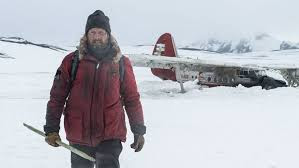- The Handmaiden Chan-wook Park
- Nocturama Bertrand Bonello
- Elle Paul Verhoeven
- Toni Erdmann Maren Ade
- 11 Minutes Jerzy Skolimowski
- Love and Friendship Whit Stillman
- American Honey Andrea Arnold
- Indignation James Schamus
- Blood Father Jean -Francois Richet
- Moonlight Barry Jenkins
Honorable Mention
Hell or High Water-- Mackenzie, L'Avenir -- Hansen-Love,
Manchester by the Sea -- Lonergan, OJ: Made in America -- Edelman,
Tower -- Maitland, Don't Breathe -- Alvarez, Silence -- Scorsese,
Tower -- Maitland, Don't Breathe -- Alvarez, Silence -- Scorsese,
Paterson -- Jarmusch, Julieta -- Almodovar
Movies I Enjoyed
Train to Busan, Colossal,
Everybody Wants Some!!,
Café Society, Kubo and the Two Strings,
I Am Not a Serial Killer, Kedi,
I Am Not a Serial Killer, Kedi,
Author: The JT Leroy Story, Embrace of the Serpent,
Hunt for the Wilderpeople, Cameraperson,
Well, The Founder,
The Love Witch, Dreamland,
Death of Louis XIV, Hacksaw Ridge,
A Bigger Splash, Deadpool,
A Bigger Splash, Deadpool,
The Edge of Seventeen, Seoul Station,
Certain Women, Men Go To Battle,
Free Fire, Detour,
Kill Your Friends, The Eyes of My Mother,
Nocturnal Animals, Jackie,
Nocturnal Animals, Jackie,
10 Cloverfield Lane, Hail Caesar!
Below the Mendoza Line
La La Land, Doctor Strange,
Antibirth, Miss Peregrine's Home for Peculiar Children,
Anthropoid, The Autopsy of Jane Doe,
The Void, The Alchemist Cookbook,
War on Everyone, The Good Neighbor,
Goldstone, Dog Eat Dog,
Loving, 31,
Sully, The Nice Guys,
Captain Fantastic, Creepy,
The Lost City of Z, I Olga Hepnarova,
I Am the Pretty Thing..., Midnight Special,
I Am the Pretty Thing..., Midnight Special,
A Dark Song, Miles Ahead,
Army of One, The Accountant,
Killing Poe, Terrifier,
The Shallows, The Neon Demon,
Arrival, Slack Bay,
The Magnificent 7, BFG,
Mike and Dave Need Wedding Dates,
Neighbors 2, Rogue One: A Star Wars Story,
Neighbors 2, Rogue One: A Star Wars Story,
Yoga Hosers,
Sausage Party, Bad Santa 2
Cave Videntium
Cell










































